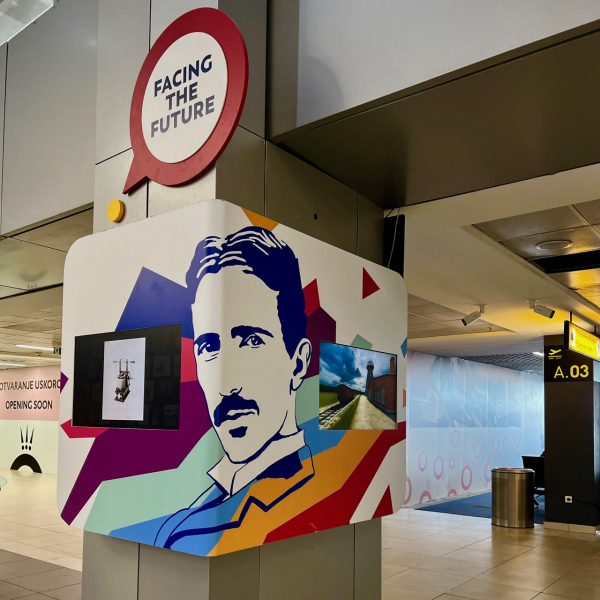
Remember I talked about 11 things you’ll love in Belgrade? (17 things, it turned out. But, erm… who’s counting.) I mentioned 3 days was not enough to see and do all the things I wanted to in the Serbian capital, so next time…
Well, next time recently came around. On a road trip through 7 Balkan countries earlier this month (post will appear soon-ish, possibly a very long one), we made sure to add Belgrade to the itinerary. In fact, it was our longest stay in one place. And for good reason. The city has a lot to offer, with proper city feels. So without further ado, here are 5 more things you’ll love in Belgrade.
1. Tesla: the Man and the Museum
Nikola Tesla was a fascinating person; one who doesn’t get enough attention in my opinion. Although admittedly, Elon Musk has done his bit to help with that. And it makes sense that Elon named the car Tesla (and not Edison), since the car has an alternating current induction motor, developed by none other than, well, Tesla.
But even without the cool cars, there is no reason the father of alternating current should not be as well-known as Thomas Edison, who dealt with direct current. AC/DC.
Nikola Tesla at Belgrade airport
Also, Nikola Tesla was even more of a visionary than Edison. Think wi-fi, remote controls, drone technology, self-driving cars, flying cars (can’t be long now).
Recognise this device?
When wireless is perfectly applied the whole earth will be converted into a huge brain, which in fact it is, all things being particles of a real and rhythmic whole. We shall be able to communicate with one another instantly, irrespective of distance. Not only this, but through television and telephony we shall see and hear one another as perfectly as though we were face to face, despite intervening distances of thousands of miles; and the instruments through which we shall be able to do his will be amazingly simple compared with our present telephone. A man will be able to carry one in his vest pocket.
Nikola Tesla, 1926
And yet… why? For one, Tesla didn’t have Edison’s marketing skills. He was modest and soft-spoken – pure inventive genius. Then there is this – possibly an unpopular opinion back in his day:
It is clear to any trained observer . . . [that the] struggle of the human female toward sex equality will end in a new sex order, with the female as superior. . . . It is not in the shallow physical imitation of men that women will assert first their equality and later their superiority, but in the awakening of the intellect of women.
Ahead of his time in every sense. About a century ahead.
Muzej Nikole Tesle
Although Tesla spent much of his adult life in the USA, his legacy is here in Belgrade. After his death, all his belongings were moved to then Proleterskih brigada (now Krunska) street, which today houses the Nikola Tesla museum.
Fairly strict rules apply here. We try to waltz in, expecting to be able to wander around on our own, but are told, rather sternly, to wait outside until the next tour in English begins. Not a big deal, as tours are frequent – there is usually one every hour. While we wait outside in the heat (must have been about 35°C), others have the same idea, but are also firmly told to wait outside. Fair is fair.
Once inside, we are directed to a small cinema to watch a 15-minute introductory film about Nikola Tesla’s life. Interesting as that is, I already know most of it. And I am here to play. With alternating current. C’mon!
Finally! The guide gives a short lecture, then asks for volunteers for the first experiment. Pick me, pick me!
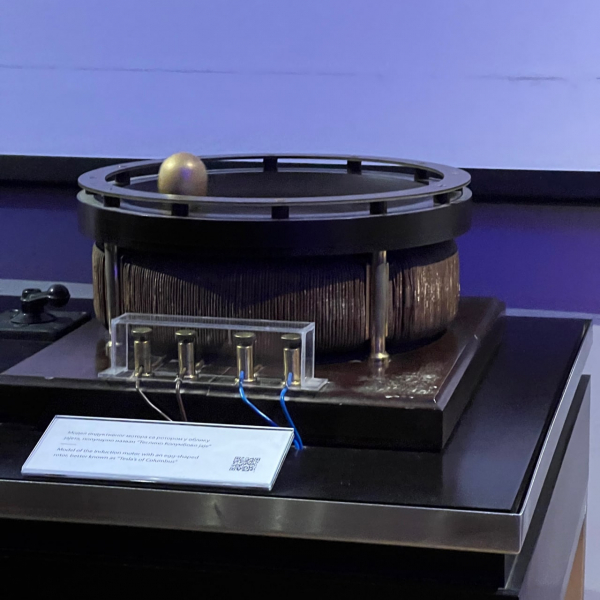
Tesla’s Columbus Egg: the egg stand upright AND spins fast on the rotating field
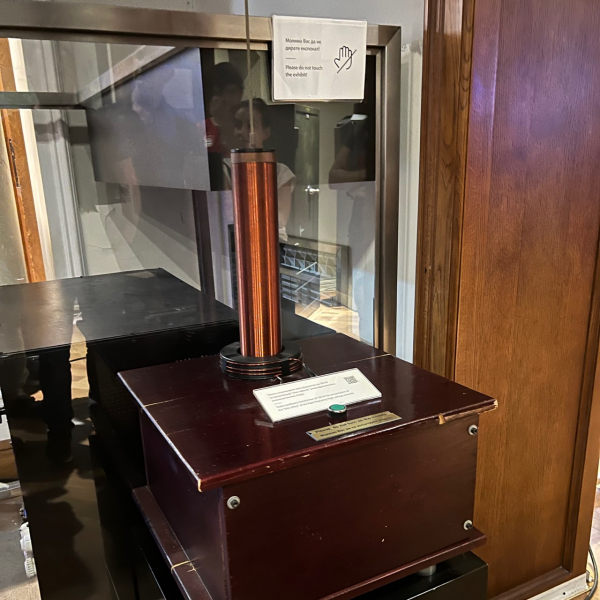
The Tesla Coil: used to produce high-voltage, high-frequency, low-current electricity.
He demonstrates a few more experiments, then we are allowed to wander around. Several of Tesla’s inventions are on display, as are more personal things, including his ashes in a golden sphere.
We are also allowed to try some of the experiments again. Yay! We can play by ourselves. Or so I think. Not so. I cannot give myself tiny electrical shocks with the Tesla Coil, says the guide in no uncertain terms. But as long as he is the one to press the button, we’re good.
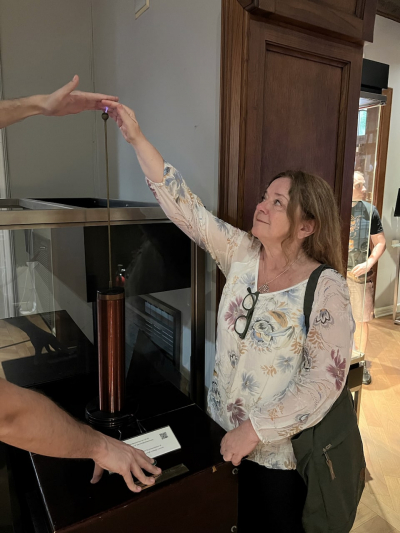
Here we go again
Muzej Nikole Tesle practicals
About 150,000 people visit the Tesla Museum annually. If you are in Belgrade with your family, this interactive museum will be a highlight for children (and children at heart), with interesting inventions and exhibits.
- The Nikola Tesla Museum is located in the Vračar district of Belgrade, on Krunska Street 51. It’s an easy 30-minute walk from the city centre, or you can take a bus, or park your car up to 2 hours nearby.
- Information on opening hours, a current schedule of guided tours (in English or Serbian), and entry fees can be found here. You cannot pay with credit cards, but there is a cash point (ATM) nearby.
- Also, you cannot book a slot on a tour in advance, so be prepared to wait if tours are filled up. Come early if you want to avoid crowds/waits.
- The tour takes about 45 minutes.
- Be aware that the museum is quite small, and it can feel a bit cramped when everyone stands close together to see and participate in the experiments.
2. Sveti Sava Temple
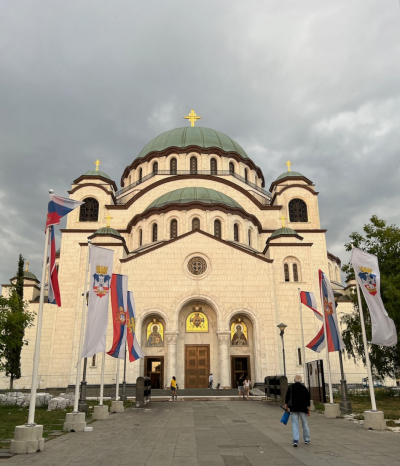
A 10-minute walk from the Tesla Museum, on Vračar hill, is Sveti Sava Temple, the world’s second biggest Orthodox church. It is enormous; you simply cannot miss it. It is also a sublime building, especially inside. Let’s enter:
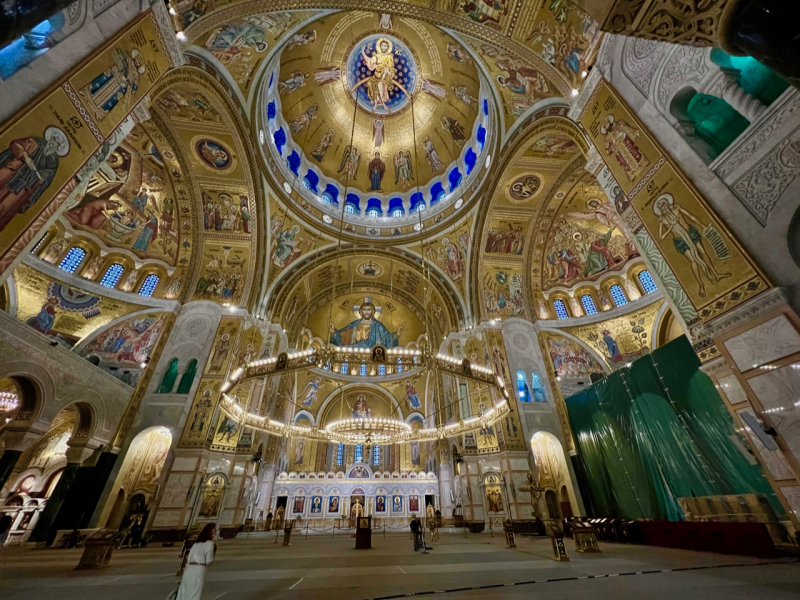
Legend has it, this is where the relics of Saint Sava, founder of the Serbian Orthodox Church, were burned during Ottoman rule.
All gold, marble and gorgeous frescoes, this is like no church I have ever seen, Orthodox or otherwise. The space reminds me more of mosques I have seen in Central Asia.
Downstairs is the crypt.
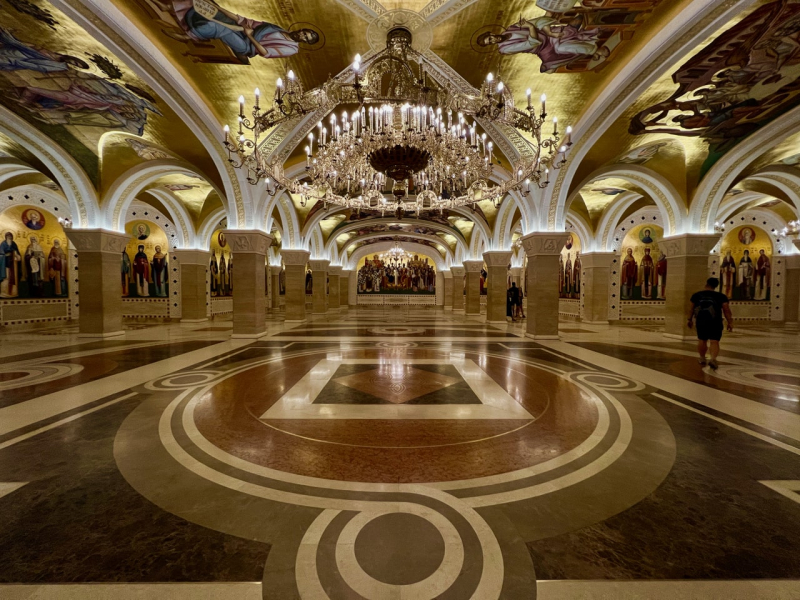
Just as stunning, with the golden ceiling, the massive chandeliers, and bright, vivid paintings of saints.
Sveti Sava Temple practicals
- Address: Krušedolska 2a
- Opening hours 07.00 – 19.00
- Entry is free
3. Kalenić Green Market
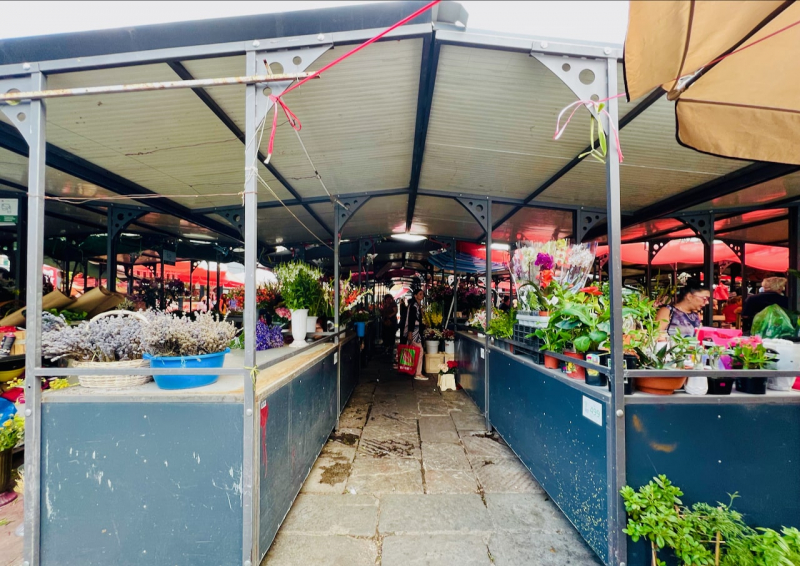
Also in the neighbourhood is Kalenić Green Market, Belgrade’s large open-air farmers’ market (nearly 12,000 m²), where you can buy fresh produce, flowers, sweets, rugs, second-hand clothes, bags, books, toys, Serbian culinary specialties like ajvar, Ex-Yugoslavia memorabilia, and more.
I am a bit wary of such markets, mostly because they tend to smell raw meat, which I find rather awful, especially in the heat of summer. Thankfully, Kalenić Green Market smells of fruits and flowers. Meat and fish are sold refrigerated in shops here.

Kalenić Green Market practicals
- Opening hours: every day from 06.00 – 17.00
- Address: on the corner of Maksima Gorkog and Njegoševa streets
The market is a 10-minute walk from both Sveti Sava Temple and the Tesla Museum:
4. Smizla Vintage & Design Store: back in the city centre –

– and back in the 20th century
Remember that Belgrade has heaps of fun and unusual designer and vintage shops? A new acquaintance for me this time, is Smizla Vintage & Design Store. It is filled with second-hand clothes, vinyl records, a staggering collection of retro sunglasses, and deliciously dusty Ex-Yu kitsch galore. The stories these things could tell!
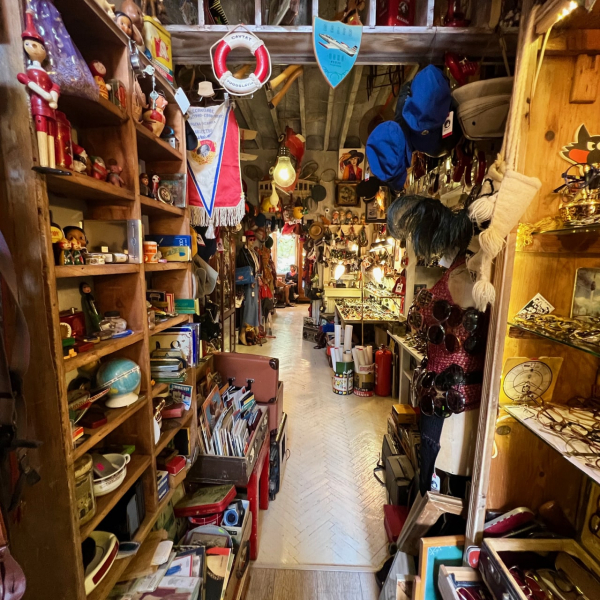
There is so much to look at, you can wander around for quite a while. And perhaps find some weird and wacky presents for someone old enough to remember there once was a country called Yugoslavia. The friendly owners help you find pretty much exactly what you’re looking for. A bit of vintage magic right there in the centre of Belgrade.
Smizla Vintage & Design Store practicals
- Info on opening hours and the like at Smizla’s Instagram.
- Address: Zmaja od Noćaja street 14. Smizla is a bit hidden in an apartment building. The kind where you have to ring the doorbell to be let in. Like a little secret, kind of adding to the quirky experience.
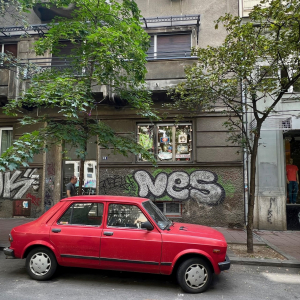
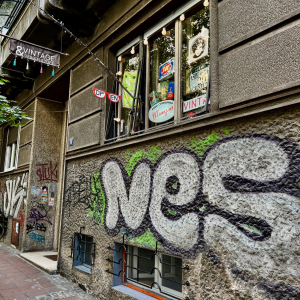
5. Hotel Jugoslavija
While we’re on the subject of Ex-Yu, also worth a closer look (and perhaps a nostalgic overnight), is Hotel Jugoslavija.
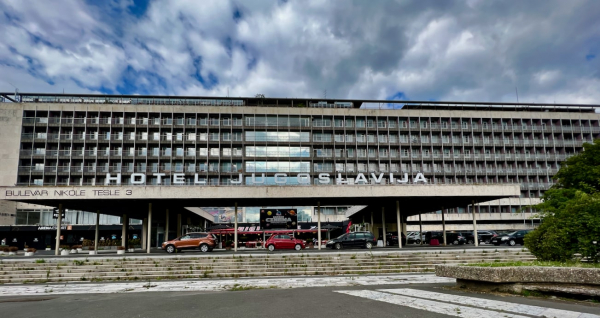
You’ll find it in the Zemun district, home of Gardoš Tower and numerous splavovi (party boats) along the Danube River. When the hotel opened in 1969, it was the most luxurious in Yugoslavia: 5-stars, with expensive art, gold-plated cutlery and a 14-tonne chandelier with 40,000 Swarovski crystals. Queen Elizabeth stayed here once, as did Tina Turner and the entire crew of Apollo 11 (just 3 months after the moon landing).
The hotel was damaged and partly demolished by NATO bombing during the Balkan wars in the 1990s, and has since been partly restored. It is but a shadow of its former glory today, but it does operate as a 3-star hotel with reasonable prices and a cool location just where the Danube and Sava rivers meet. Outside is a quay with outdoor restaurants and bars, and several splavovi along the banks.

Hotel Jugoslavija practicals
- Address: Bulevar Nikole Tesle 3 (but you knew that already, didn’t you…)
- There’s a couple of restaurants/bars outside: Zapata (Mexican, by the riverside) and the delightfully named Intergalactic Diner (burgers).
Belgrade eats and sleeps
As for restaurants, I don’t really have anything new to offer. I liked the ones from last time, you see – and wanted to try them again. Both Manufaktura (just off the main pedestrian street Knez Mihailova) and Ambar (at the Betonski Brod restaurant district by the river), still deliver the goods. More on both in this post.
Special mention to Ambar this time, for their Dine Without Limits-menu, where you can try everything they have, like a bottomless tasting menu. And if there is something you especially like, you can always ask for more. I promise your stomach will beg you to stop long before the servings will.
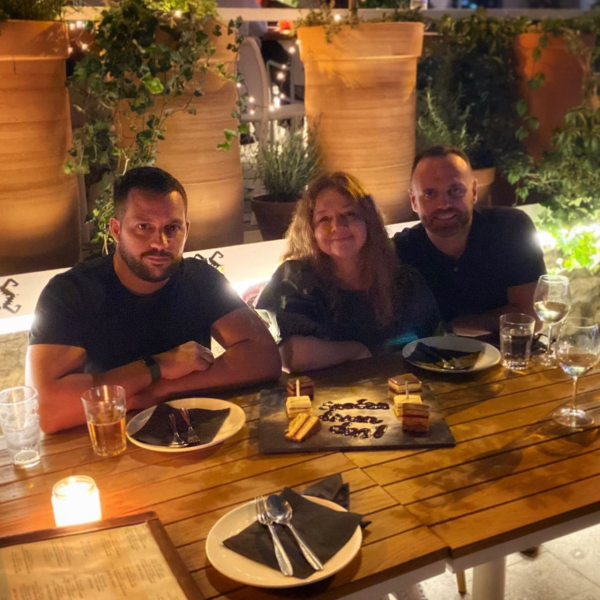
Also, bonus points to Ambar for organising birthday cake at short notice.
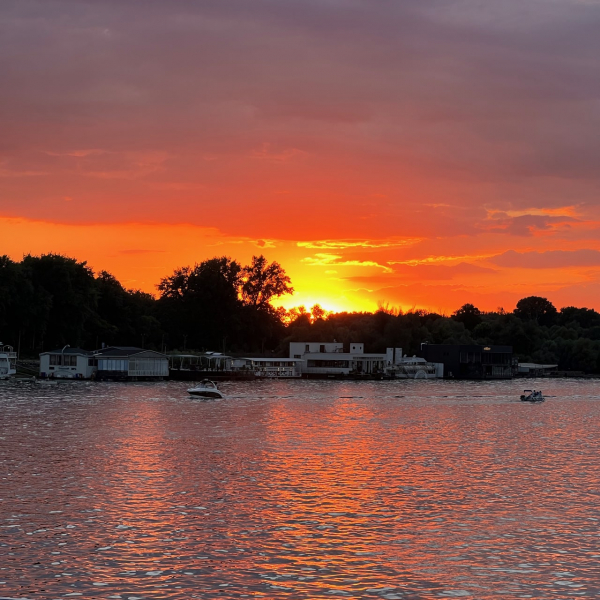
Sunset over the Sava River, seen from Betonski Brod.
In Belgrade this time, we stayed at Mama Shelter. You can read my review of Mama Shelter Belgrade here.
Disclosure: Our stay in Belgrade was hosted by VisitSerbia. As always and ever, I retain the right to write anything I want – or nothing at all; my bit of cyberspace, my rules. Otherwise, this would all be meaningless.

